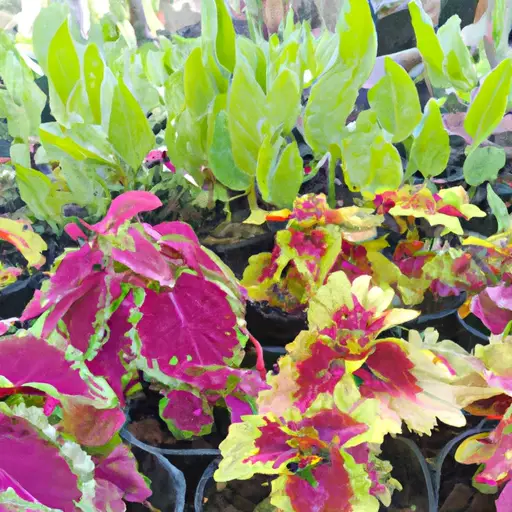Explore the World of Container Gardening for Beginners
Container gardening is a popular and accessible way for beginners to experience the joys of gardening. Whether you live in an apartment with limited space or have a small backyard, container gardening allows you to cultivate a variety of plants without the need for a traditional garden bed. In this article, we will explore the world of container gardening for beginners, discussing its benefits, getting started, selecting containers and plants, and important tips to ensure success.
Benefits of Container Gardening
Container gardening offers several advantages that make it appealing to beginners. First and foremost, it provides an opportunity to grow plants even in limited spaces. Whether you have a small balcony, patio, or just a windowsill, you can transform these areas into colorful and vibrant spaces with pots filled with blooming flowers or thriving herbs.
Another significant benefit is the ease of maintenance associated with container gardening. Compared to traditional gardening methods that involve preparing soil beds and dealing with weed control, container plants are much more manageable. They require less time and effort when it comes to weeding and tending to the garden.
Additionally, container gardens offer greater mobility. If you live in an area with extreme weather conditions or lack space for permanent planting beds, containers can be easily moved indoors during harsh winters or harsh summers when temperatures may become too extreme for your plants.
Getting Started with Container Gardening
To get started with container gardening as a beginner, consider the following steps:
1. Assess Your Space: Determine how much space you have available for your container garden. Measure your balcony or patio area if necessary before purchasing containers.
2. Select Containers: Choose containers that suit both your personal style and the specific needs of your chosen plants. Consider factors such as size, material (clay pots versus plastic pots), drainage holes, and aesthetics.
3. Prepare Potting Soil: Invest in good quality potting soil mix rather than using regular garden soil, as it provides proper drainage and moisture retention. Fill your containers with the potting soil, leaving about an inch of space at the top to allow for watering.
4. Choose Plants: Select plants based on your preferences and the specific conditions of your space. Consider factors such as sunlight exposure, temperature, and maintenance requirements. As a beginner, it is advisable to start with low-maintenance plants such as herbs, leafy greens, or flowering annuals.
Selecting Containers and Plants
Choosing suitable containers and the right plants are crucial factors for a successful container garden. Here are some tips to guide you:
1. Containers: Ensure containers have drainage holes to avoid waterlogging that can damage plant roots. Plastic pots are lightweight and retain moisture better than clay pots but may require more frequent watering. Clay pots provide good aeration but may dry out quickly.
2. Size: Choose container sizes that accommodate your chosen plants’ root systems adequately. While larger containers offer more room for plant growth, smaller containers are suitable for small varieties or slow-growing plants.
3. Plant Selection: Consider the amount of sunlight your space receives daily when choosing plants. For full sun areas, opt for sun-loving plants like tomatoes or marigolds. If you have limited light exposure, focus on shade-tolerant plants like ferns or begonias.
Important Tips for Successful Container Gardening
To ensure success with your container garden, keep in mind these essential tips:
1. Watering: Containers tend to dry out faster than traditional gardens due to increased exposure to air circulation. Therefore, regular watering is crucial for healthy plant growth. Water thoroughly when the top inch of soil feels dry and always check if drainage holes are clear.
2. Fertilizing: Supplement your potting soil by periodically adding organic fertilizers or slow-release granules according to the needs of your specific plant varieties.
3. Sun Exposure: Place containers in areas that receive optimal sunlight based on the light requirements of your chosen plants. Monitor the sun patterns throughout the day to ensure they get enough light without excessive exposure.
4. Pest Control: Container gardens are not immune to pests such as aphids or snails. Regularly inspect your plants for signs of infestation and take appropriate measures like using organic pesticides or handpicking pests.
5. Maintenance: Prune, deadhead, and remove faded leaves regularly to keep your container garden looking fresh and healthy. This will also encourage new growth and prevent disease or pest issues.
In conclusion, container gardening offers a wonderful opportunity for beginners to explore the world of gardening, regardless of their limited space or experience level. Its benefits, such as easy maintenance, mobility, and vibrant aesthetics make it an appealing choice for those wanting to enjoy the beauty of plants without a traditional garden bed. With careful planning, suitable containers, proper planting choices, and regular maintenance, beginners can create thriving container gardens that bring nature right to their doorsteps. So go ahead and embrace this exciting form of gardening – let your creativity flourish in your own little green oasis!













